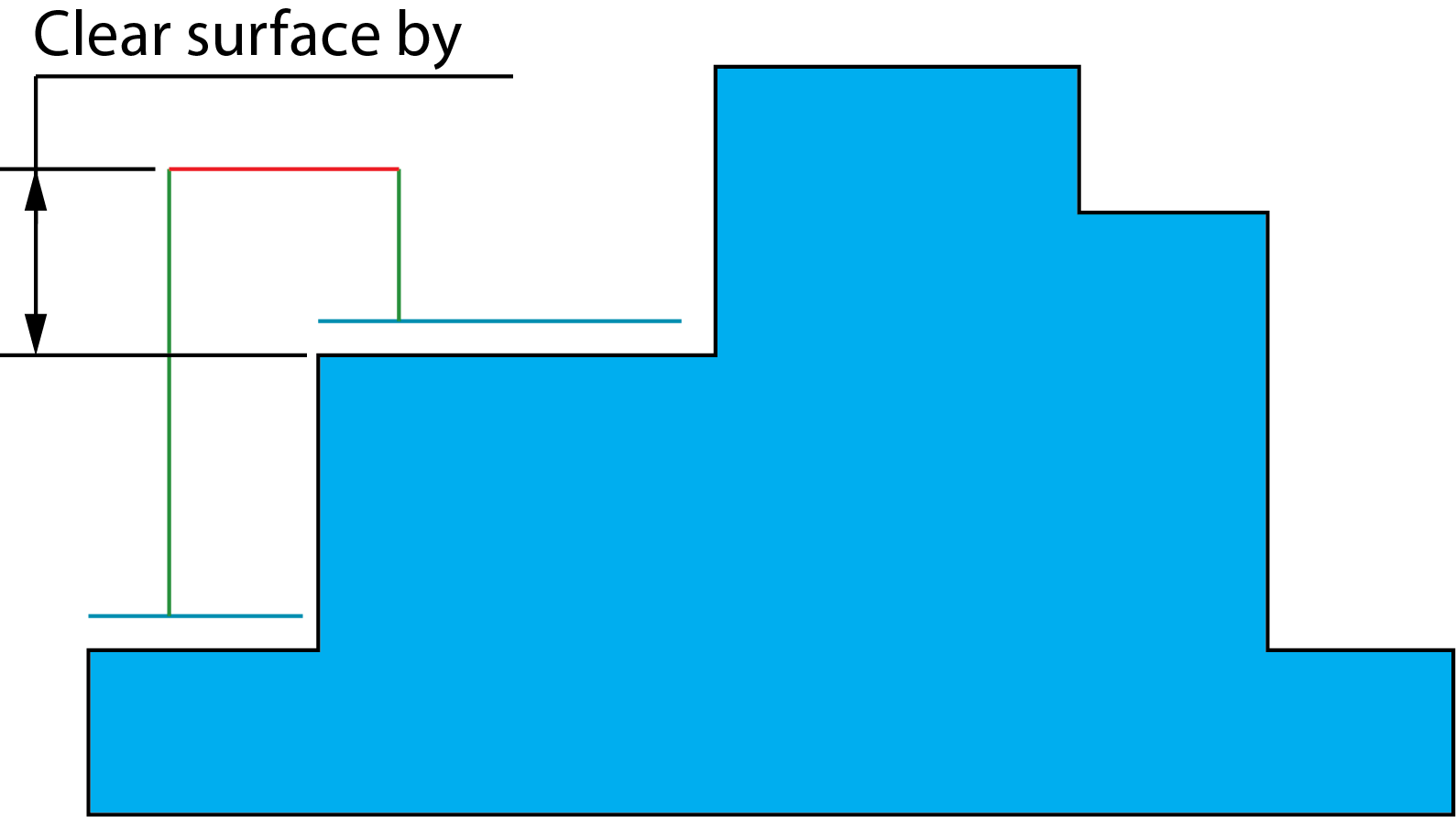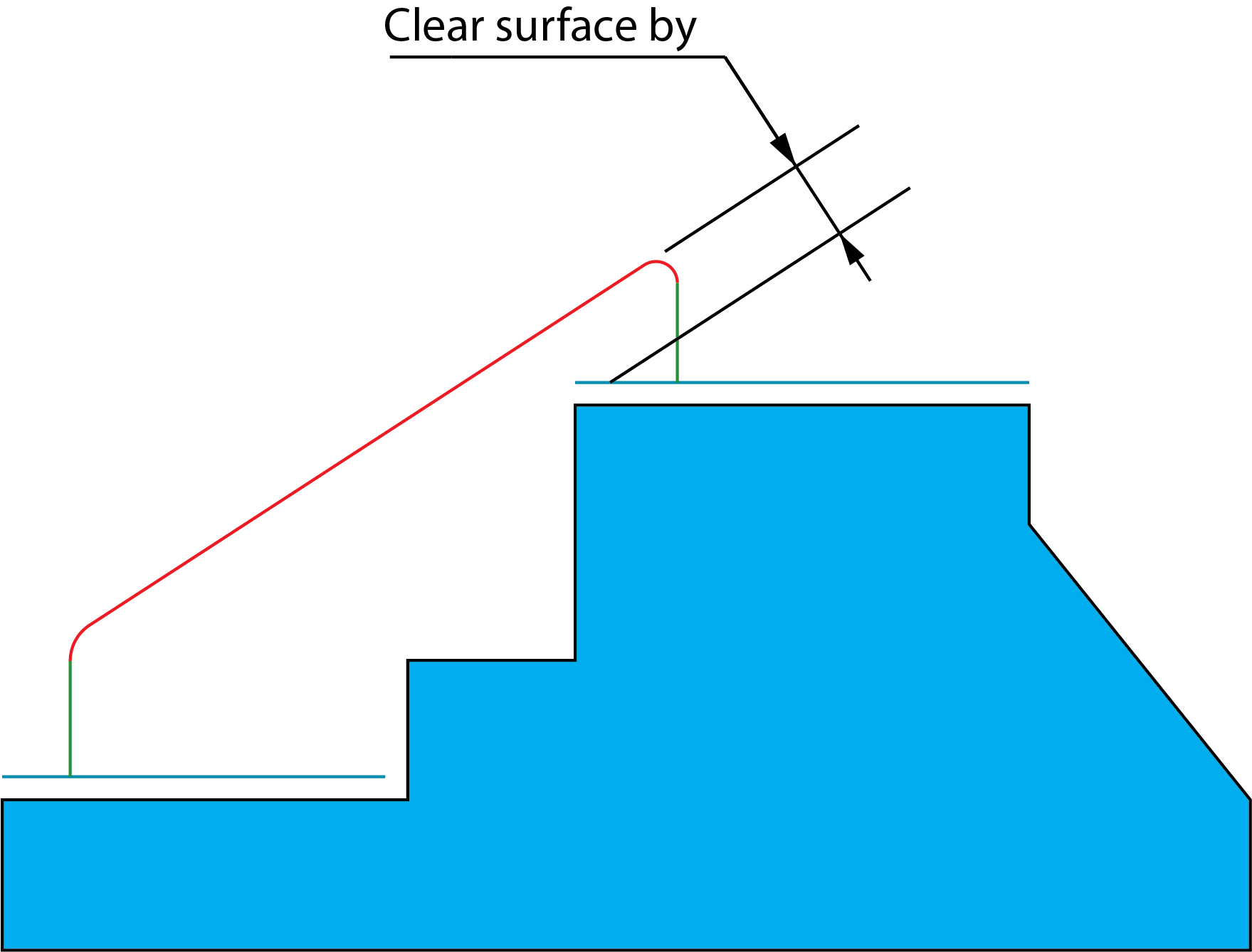Clearance
The Clearance parameters apply both to the lead in and the lead out components of retract motions.
Clear surface within
This option affects the tool path when the Shortest route style is chosen. It specifies the distance the tool moves away from the surface with the cutting feed rate, before the rapid movement starts.
The distance is measured from the end of the lead out arc to the point where the tool is guaranteed to be clear of the surface.
Minimum rapid length
This option is used to specify a limit. If the 2D distance between the ends of the lead moves is less than this value, a 3D connecting move at lead feed rate is used. Otherwise a retract move is used.
Clear surface by
This is the minimum distance by which the tool will be clear of the surface during its rapid linking motion. All points of the tool – on both the tip and the side have to avoid the surface by this distance.
For Minimal vertical retract motions, the tool lifts up to a height that ensures clearance.

For Shortest route motions, the tool is lifted up above the surface to ensure the clearance, then it performs rapid motion maintaining the Clear surface within distance.

|
This clearance is applied in addition to any thickness that you have already specified for the tool. In particular, with a negative thickness, the clearance is above the reduced surface and not the real surface – so you should set this value higher to prevent the tool from gouging the surface.
|
Related Topics